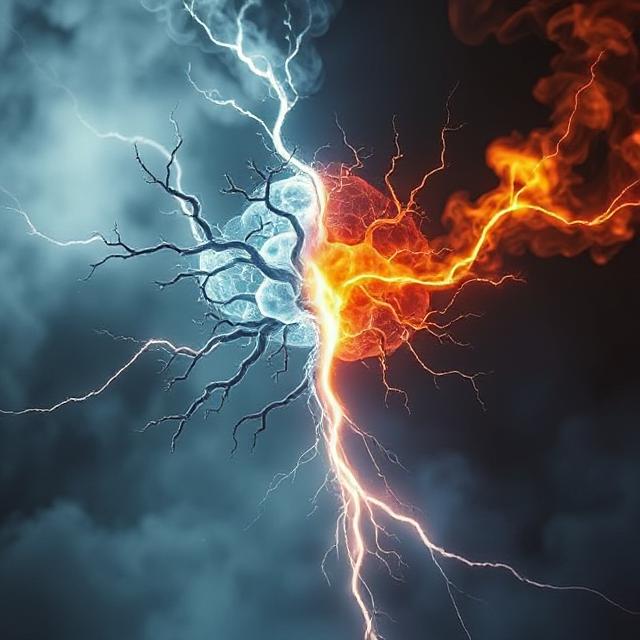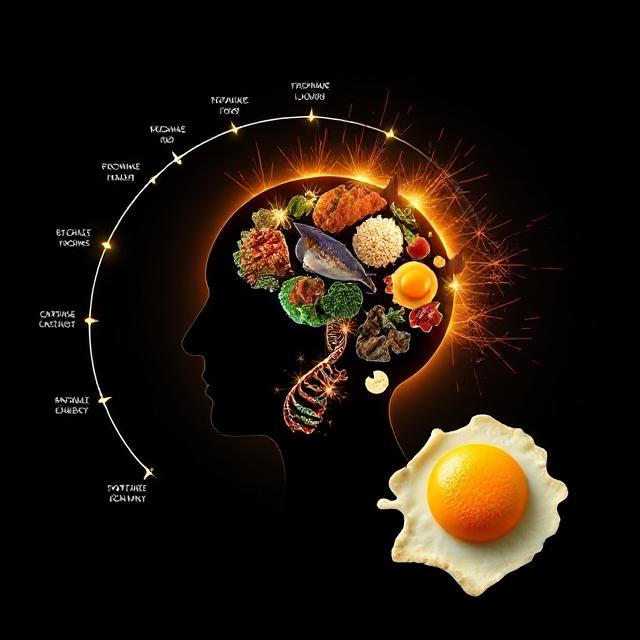
Table of Contents
Metabolic Flexibility and Stress: Brain-Body Resilience
In our high-pressure modern world, stress isn’t just psychological—it’s deeply metabolic. Behind every burst of anxiety or fatigue lies a cellular struggle: your body deciding what fuel to burn, how to allocate energy, and whether to prioritize survival or cognition.
Enter metabolic flexibility—your body’s ability to switch between carbohydrates and fat as fuel depending on the situation. It’s not just about burning calories efficiently; it’s about how your body handles stress, recovers from it, and remains mentally sharp under pressure.
In this article, we’ll explore how metabolic flexibility supports brain function, buffers cortisol, stabilizes mood, and enhances adaptability across physical and psychological domains.
🔁 What Is Metabolic Flexibility?
Metabolic flexibility is the capacity to:
- Efficiently use glucose when it’s available (e.g., after a meal)
- Swiftly switch to fat or ketones when fasting or under low-carb conditions
- Prevent energy crashes by toggling between these states smoothly
A metabolically flexible person doesn’t rely on constant snacks to feel alert. Their body adjusts fuel sources based on need, like a hybrid engine switching between gas and electric power.
This flexibility becomes crucial during stressful situations, when hormones demand immediate energy availability—yet sustained brain performance and emotional control rely on stable fuel supply.
🧠 The Stress Connection: Why It Matters for the Brain
Acute or chronic stress activates the hypothalamic-pituitary-adrenal (HPA) axis, flooding the system with cortisol and adrenaline. These hormones increase glucose availability to prepare you for “fight or flight.”
But here’s the catch:
- If you’re metabolically inflexible, your body becomes glucose-dependent.
- Under stress, glucose is rapidly consumed, leading to brain fog, fatigue, and poor decision-making.
- You crash because your body can’t smoothly switch to fat for fuel.
This is the moment when metabolic flexibility becomes a resilience asset. If your body can shift into ketone production, it continues to fuel the brain even when glucose is depleted—maintaining clarity, memory, and emotional stability.
Metabolic flexibility transforms energy instability into calm cognitive power.
🔬 Mechanism: How Fuel Switching Buffers Stress
Here’s a breakdown of how the process works under the hood:
| State | Fuel Source | Brain Effect | Stress Impact |
|---|---|---|---|
| Fed (glucose) | Carbohydrates | Fast, reactive energy | Can exacerbate cortisol spikes |
| Fasted (ketosis) | Fat/ketones | Steady, anti-inflammatory | Stabilizes mood, enhances focus |
| Flexible | Both | Adaptive | Maintains clarity under stress |
Key Metabolic Benefits:
- Ketones (like β-hydroxybutyrate) reduce inflammation and oxidative stress in the brain.
- Fat oxidation prevents the sharp insulin spikes that feed anxiety or irritability.
- Low glucose dependence avoids sugar crashes during high-stress tasks.
A metabolically flexible person has more tools for dealing with unexpected pressure—mentally and physically.
🧘♂️ Real-Life Applications: Stress-Buffering in Action
1. Cognitive Performance During Fasting
Fasting naturally pushes your body to use stored fat. Metabolically flexible individuals transition to ketone-based cognition, often reporting:
- Enhanced problem-solving
- Increased verbal fluency
- A calm, alert state
Stressful meetings, exams, or deadlines become less mentally taxing when energy is steady.
2. Emotional Resilience Under Pressure
When glucose reserves dip, inflexible metabolism triggers mood swings or panic. In contrast, a fat-adapted brain runs stable—reducing emotional reactivity.
Think of metabolic flexibility as neural noise-cancellation: it quiets metabolic chaos so you can focus.
3. Sleep Recovery and Cortisol Control
Metabolic flexibility improves sleep by:
- Reducing nighttime cortisol spikes
- Supporting melatonin synthesis through amino acid conservation
- Preventing midnight glucose dips that wake you up
Better sleep = better recovery = less stress.
🥑 How to Build Metabolic Flexibility
Becoming metabolically flexible doesn’t require extreme diets. It’s about teaching your metabolism to adapt. Here’s how:
1. Time-Restricted Eating (TRE)
- Try a 12:12 or 16:8 fasting window.
- Gradually extend fasting periods to train fat adaptation.
2. Lower Carb Intake Some Days
- Include moderate carb cycling: low-carb days allow your body to practice switching to fat.
- Avoid rigid keto—flexibility is the goal, not carb-phobia.
3. Exercise in a Fasted State
- Even light activity (like walking or yoga) during fasting enhances mitochondrial efficiency.
- This trains the body to produce ketones for the brain under demand.
4. Include Healthy Fats
- Grass-fed butter, olive oil, wild fish, and coconut oil support fat metabolism.
- Avoid trans fats and seed oils which damage mitochondria.
5. Track Biomarkers
- Use glucose/ketone meters, HRV trackers, or fasting apps.
- Data helps adjust your approach and monitor progress.
🧪 Experimental Tip: Stress-Response Mini Protocol
Try this simple metabolic stress-resilience booster:
- Evening before: Eat a low-carb, high-fat dinner
- Next morning: Delay breakfast (fast 14–16 hours)
- Light fasted movement: Walk or yoga
- Work window: Engage in deep work during ketone peak (~16 hours fasted)
- Break fast: Balanced meal with healthy carbs and protein
Result: A day of high focus, reduced cortisol swings, and smoother cognitive transitions.
Do this once or twice per week and observe mood, focus, and physical energy.
🧠 Final Insight: Metabolism Is Mindset
Your brain isn’t just a thought machine—it’s a fuel processor. How you burn energy changes how you think, feel, and cope.
By developing metabolic flexibility, you:
- Stay sharp when others crash
- Maintain emotional control under pressure
- Build cognitive stamina through biochemical resilience
Stress doesn’t vanish—but your response to it becomes stronger, smarter, and more self-regulated.
Build metabolic resilience, and your mind will follow.








